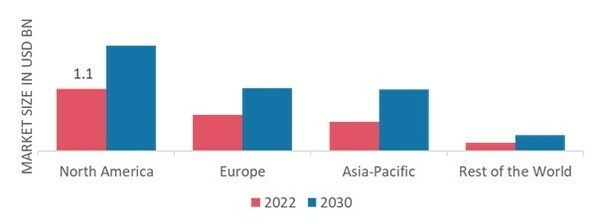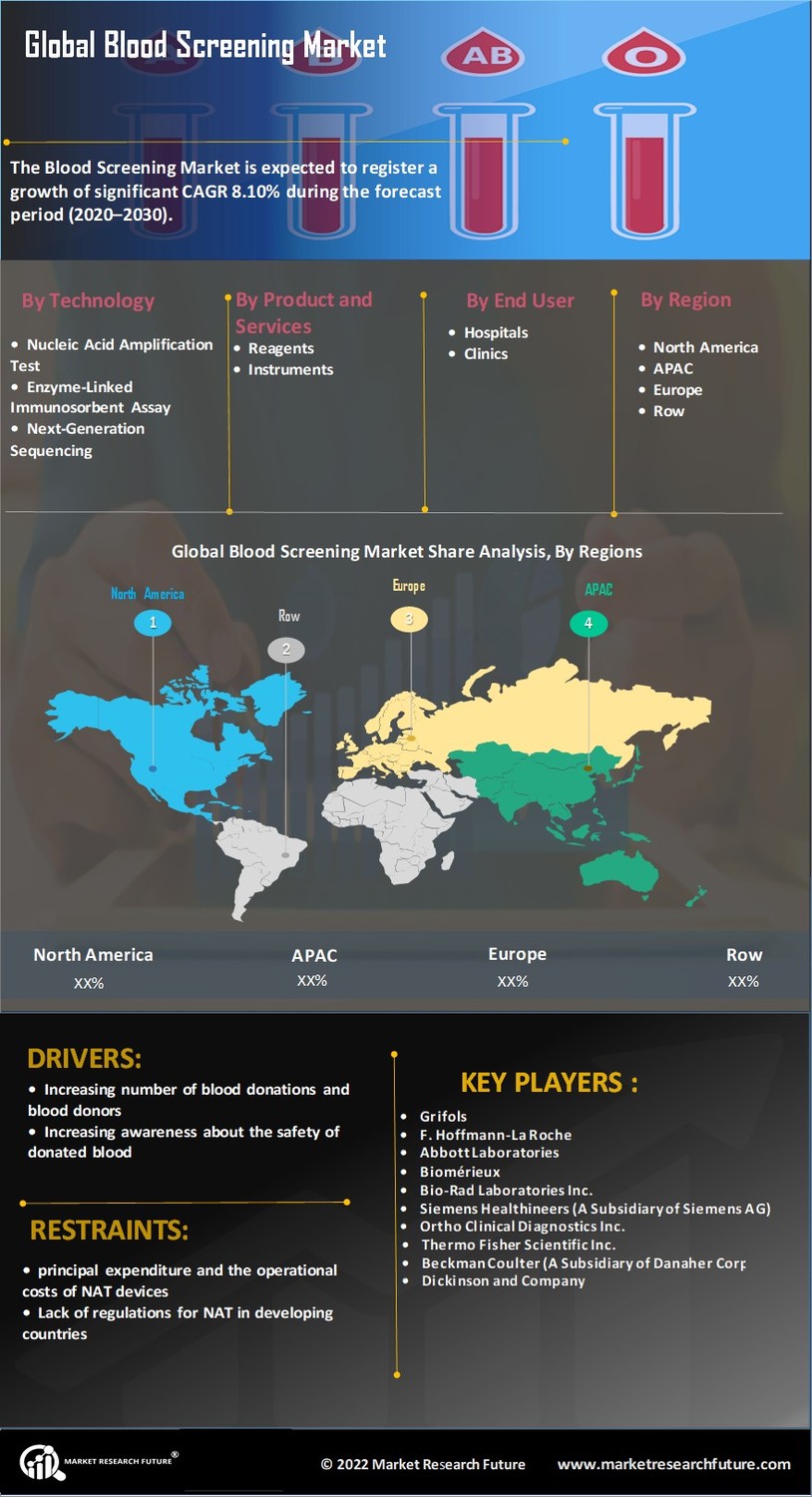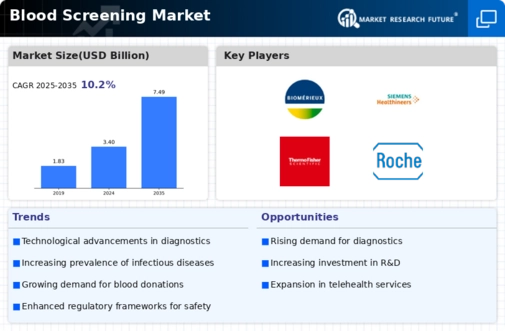By Region, the study provides market insights into North America, Europe, Asia-Pacific, and the Rest of the World. The North American Blood Screening market accounted for USD 1.14 billion in 2022 and is likely to exhibit a significant CAGR growth over the study period. The region's largest share is mainly attributed to rising blood transfusion-related screenings, increasing infectious disease prevalence, an aging population, the need for early disease detection and monitoring, rising healthcare expenditure, and the growing adoption of technologically advanced blood screening technologies.
This region's dominance is further attributed to increased blood donors, widespread implementation of blood screening procedures, and improved patient affordability.
Further, the major countries studied in the global market report are the U.S., Germany, Canada, France, the UK, Spain, Italy, Japan, India, Australia, China, South Korea, and Brazil.
Figure 3: BLOOD SCREENING MARKET SHARE BY REGION 2022 (%)
Source: Primary Research, Secondary Research, Market Research Future Database, and Analyst Review
The second-largest market share belongs to the European blood screening market, where respiratory illnesses and cancer are becoming more common. Rising government support and increased private-sector investment in the research and development of various blood screening tests are driving revenue growth in this region. For instance, F. Hoffmann-La Roche Ltd. introduced the Cobas Zika test for Cobas 6800/8800 Systems on December 16, 2019. The Cobas Zika test is designed to screen blood donations in Europe for Zika virus infection by finding RNA in human plasma samples.
In addition, the European Union has made blood screening for HCV, HBV, HIV, parvovirus-19, and other viruses mandatory. Further, the German blood screening market held the largest market share, and the UK blood screening market was the fastest-growing market in the European region.
The Asia-Pacific Blood Screening Market is projected to grow at the fastest CAGR from 2024 to 2032, owing to rising patient affordability and key industry players' increased focus on emerging markets. Japan, India, China, Singapore, and Australia contribute significantly to the market in the Asia Pacific region. Moreover, China’s blood screening market held the largest market share, and the Indian blood screening market was the fastest-growing market in the Asia-Pacific region.
India's blood screening market differs from other Asia Pacific nations like China and Japan as of laxer regulatory requirements and the importation of the necessary equipment and materials. Expanded investments by private and international entities, which may help offer practical tests at lower prices, are expected to lead to significant growth in the Indian blood screening industry. India's well-connected network of clinical laboratories and healthcare facilities is accelerating the adoption of blood screening methods.






